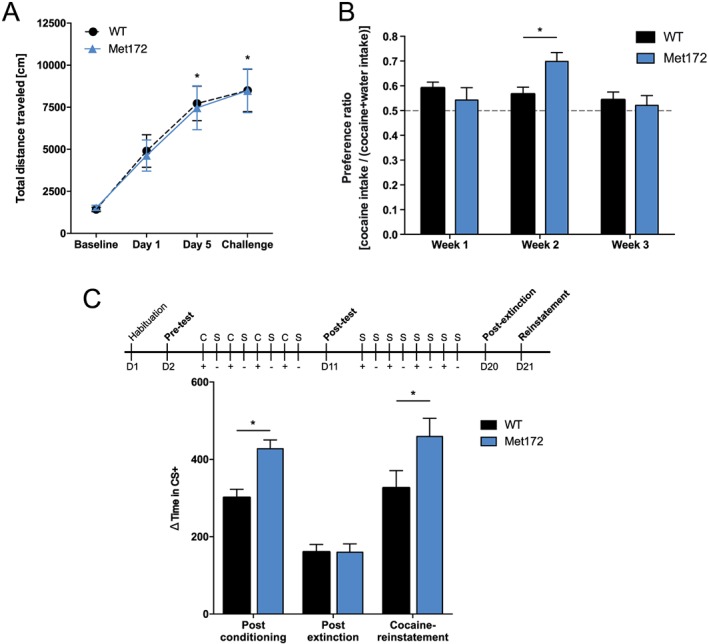Figure 4.

(A) Locomotor sensitization to cocaine (15 mg·kg−1, i.p.) did not differ between WT and SERT Met172 mice. Significant main time effect in two‐way RM‐ANOVA. *P < 0.05, signficantly differences between day 5 and day 1 and between challenge and day 1; Sidak post hoc test, n = 26 (WT), 28 (Met172). (B) Two‐bottle choice test to assess consumption of cocaine (0.1 mg·mL−1) administered in the drinking water. WT mice did not change their preference for cocaine‐supplemented water relative to supplemented drinking water over time. Met172 mice showed a greater cocaine preference compared to WT in the second week (significant interaction and main time effect. Data are means ± SEM, n = 19 (WT), 8 (Met172). *P < 0.05, signficantly different from WT; two‐way ANOVA with Sidak post hoc test,. (C; top) Schematic outline of the paradigm. C, cocaine treatment (15 mg·kg−1, i.p.); S, saline treatment; +, in cocaine‐paired cue (CS+); −, in saline‐paired cue (CS−). Place preference testing occurred on days 1 (D1), 2 (D2), 11 (D11), 20 (D20) and 21 (D21). (C; bottom) Conditioned place preference Δtime in CS+ represents individual time difference spent in the cocaine‐paired chamber on test day versus pre‐conditioning day. Values are seconds from total 1200 s session time. SERT Met172 mice spent more time in CS+ than WT post conditioning and after cocaine (15 mg·kg−1) reinstatement. Significant main time and genotype effect in two‐way ANOVA, All data represent mean ± SEM; n = 76 for post conditioning and post extinction, n = 32 (WT), 28 (Met172) for reinstatement. * P < 0.05, signficantly different from WT; Sidak post hoc test.
